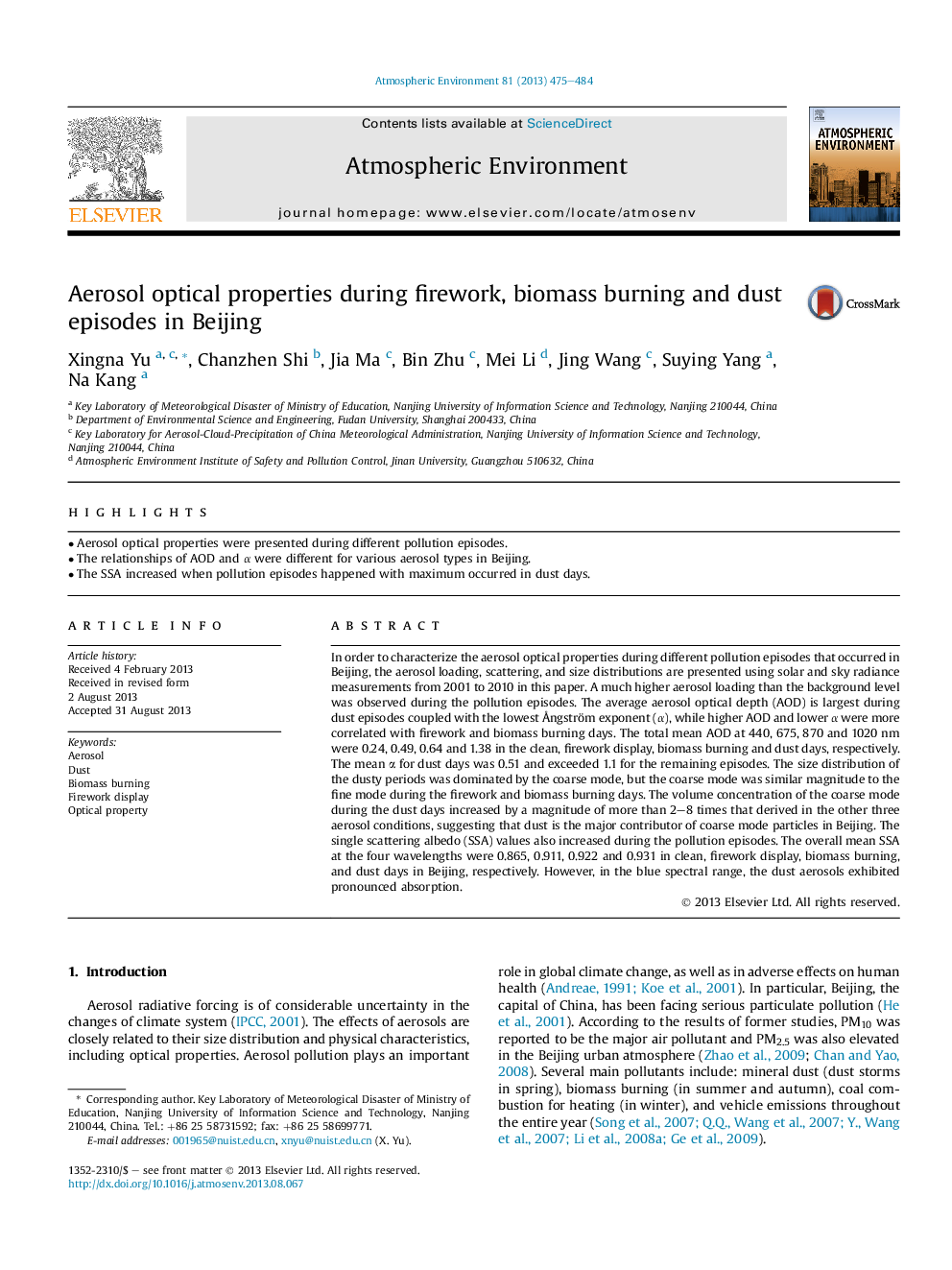| Article ID | Journal | Published Year | Pages | File Type |
|---|---|---|---|---|
| 6340503 | Atmospheric Environment | 2013 | 10 Pages |
Abstract
In order to characterize the aerosol optical properties during different pollution episodes that occurred in Beijing, the aerosol loading, scattering, and size distributions are presented using solar and sky radiance measurements from 2001 to 2010 in this paper. A much higher aerosol loading than the background level was observed during the pollution episodes. The average aerosol optical depth (AOD) is largest during dust episodes coupled with the lowest Ã
ngström exponent (α), while higher AOD and lower α were more correlated with firework and biomass burning days. The total mean AOD at 440, 675, 870 and 1020 nm were 0.24, 0.49, 0.64 and 1.38 in the clean, firework display, biomass burning and dust days, respectively. The mean α for dust days was 0.51 and exceeded 1.1 for the remaining episodes. The size distribution of the dusty periods was dominated by the coarse mode, but the coarse mode was similar magnitude to the fine mode during the firework and biomass burning days. The volume concentration of the coarse mode during the dust days increased by a magnitude of more than 2-8 times that derived in the other three aerosol conditions, suggesting that dust is the major contributor of coarse mode particles in Beijing. The single scattering albedo (SSA) values also increased during the pollution episodes. The overall mean SSA at the four wavelengths were 0.865, 0.911, 0.922 and 0.931 in clean, firework display, biomass burning, and dust days in Beijing, respectively. However, in the blue spectral range, the dust aerosols exhibited pronounced absorption.
Related Topics
Physical Sciences and Engineering
Earth and Planetary Sciences
Atmospheric Science
Authors
Xingna Yu, Chanzhen Shi, Jia Ma, Bin Zhu, Mei Li, Jing Wang, Suying Yang, Na Kang,
